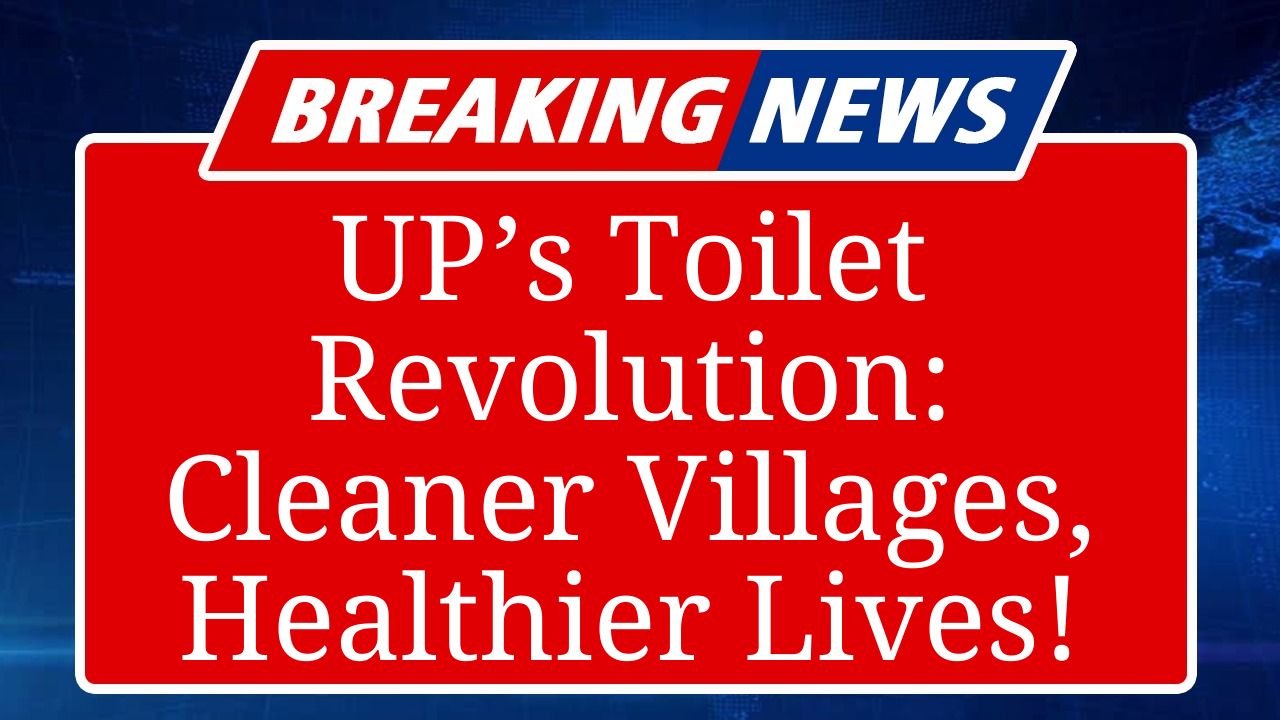UP’s new rural toilet scheme under Swachh Bharat Mission aims to enhance sanitation by providing financial aid for toilet construction in rural households. Targeting open defecation-free (ODF) status, the initiative offers Rs. 12,000 per household, prioritizing BPL families, women-led households, and marginalized communities. The scheme integrates technology and community efforts to ensure sustainable sanitation and improved public health.
Uttar Pradesh Advances Sanitation with New Rural Toilet Initiative
Uttar Pradesh has launched a renewed push under the Swachh Bharat Mission (SBM) to bolster rural sanitation through a new toilet construction scheme. Announced in 2025, the initiative focuses on sustaining the state’s open defecation-free (ODF) status while addressing gaps in rural sanitation infrastructure. The scheme provides financial assistance of Rs. 12,000 per eligible household for constructing individual household latrines (IHHLs), targeting below poverty line (BPL) families, Scheduled Castes (SC), Scheduled Tribes (ST), women-led households, and those with disabled or elderly members.
The program aligns with Phase II of SBM-Grameen (SBM-G), which emphasizes not only toilet construction but also solid and liquid waste management to achieve ‘Sampoorn Swachhata’ (complete cleanliness). By March 2025, Uttar Pradesh had already constructed over 1.08 lakh toilets under the Financial Inclusion Improves Sanitation and Health (FINISH) Program, making it the second-highest contributor to rural toilet construction in India, trailing only Bihar. The state aims to further this progress by streamlining the application process through online portals like sbm.gov.in, where eligible households can apply using their Aadhaar card, residence proof, and income certificates.
A notable milestone was the inauguration of the two-millionth toilet under the FINISH Program in Gorakhpur’s Dumri village in April 2024. Beneficiary Snehlata, a 50-year-old resident, highlighted the transformative impact of her twin-pit toilet, which converts waste into manure, benefiting both her family and the community. Such innovations are central to the scheme, with the government promoting accredited technologies like twin-pit systems to ensure sustainability. Households opting for advanced technologies can do so at an additional cost.
Despite these achievements, challenges persist. The reimbursement model, where households must initially fund construction, poses a barrier for low-income families. In rural UP, where the average monthly household income is around Rs. 8,931 (as per 2016-17 Nabard data), raising Rs. 20,000 or more for toilet construction is daunting. Delays in reimbursement, often extending beyond six months, further discourage participation, with some households resorting to moneylenders. Additionally, awareness remains low in remote areas, particularly among women, who often lack information about the application process or required documentation.
To address these issues, the scheme emphasizes community mobilization through Gram Panchayats and NGOs. These bodies are tasked with raising awareness, verifying applications, and monitoring ODF sustainability. The state has also introduced digital tools, such as the SBM mobile app, to help citizens locate toilets and track application statuses. In 2025, Uttar Pradesh plans to integrate its efforts with other schemes like the Mahatma Gandhi National Rural Employment Guarantee Scheme (MGNREGS) to enhance funding and infrastructure support.
Public health benefits are already evident. The World Health Organization noted a reduction of 300,000 diarrheal deaths in India in 2019 compared to 2014, partly due to improved sanitation. In UP, ODF villages have reported annual health cost savings of Rs. 50,000 per family and a 93% increase in women feeling safer at home due to accessible toilets. The scheme also prioritizes women’s dignity, with initiatives like Pink Toilets in urban areas inspiring similar efforts in rural regions.
As Uttar Pradesh pushes toward universal sanitation, the scheme’s success hinges on overcoming financial and informational barriers. By combining technology, community involvement, and targeted subsidies, the state aims to solidify its role in making India cleaner and healthier.
Disclaimer: This article is based on recent reports, government websites, and news sources, including swachhbharatmission.ddws.gov.in, pib.gov.in, and hindustantimes.com. Data is accurate as of September 2025, but implementation details may vary. Readers are advised to verify eligibility and application processes through official portals like sbm.gov.in.

